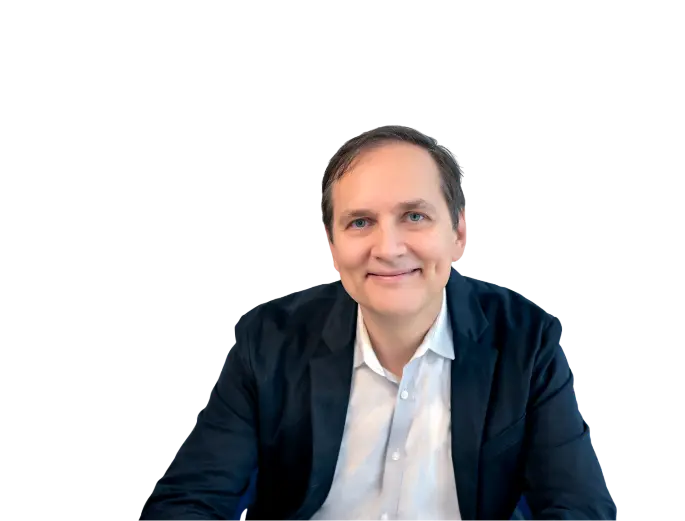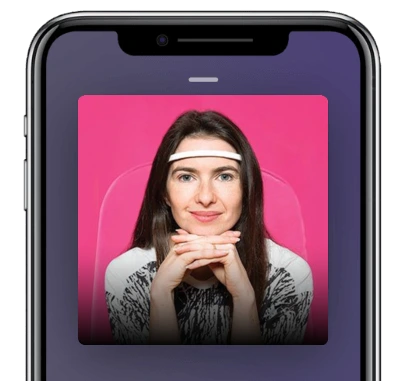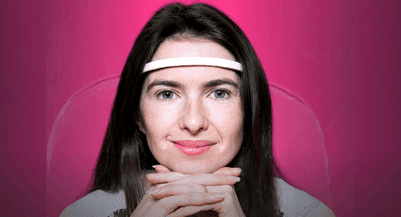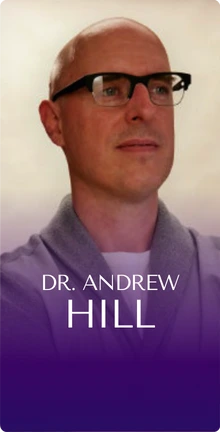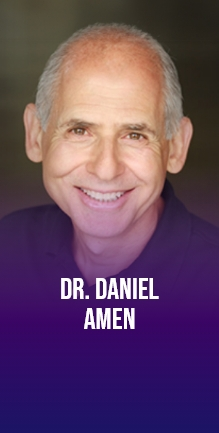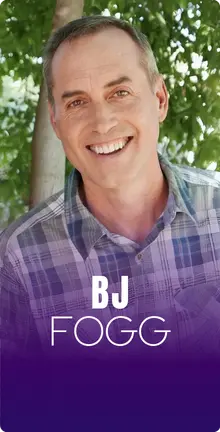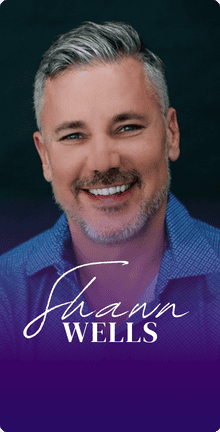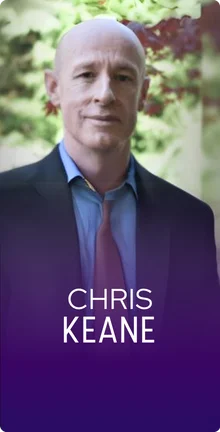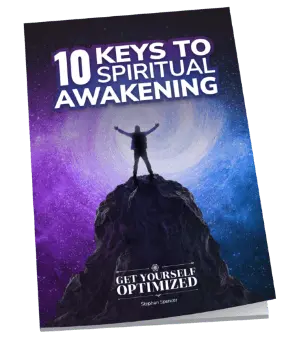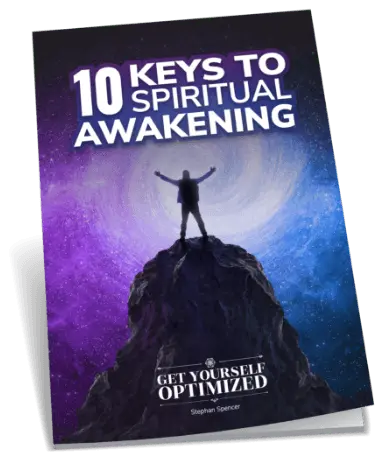Ariel, thank you for joining us. Great to have you.
My pleasure. It’s an honor and a joy to be here.
I love to start with your origin story. How did you end up creating this Muse headband that’s taken the world by storm? I had version 1 back in the early days, many years ago. You guys have been around for a while. How did you get started, how did you end up creating this headband and getting it out there into the marketplace?
It’s been a very long journey to create this device because the device is so unique. It encompasses such a broad range of different practices and technologies. My own background comes equally from the arts and sciences. My mom is an artist, so I always grew up making stuff and creating beautiful experiences for people.
Along the way, I became fascinated with the brain. The brain is the thing that is the basis of our entire experience of life. How we see, think, perceive, feel, act, etc. Yet, we have very little access to it. We have no way to really know what’s going on in our mind. We have no way to touch the organ that processes our world around us. I recognized that we could create more technologies and experiences that let us interact directly with our mind, we’d probably be able to do some pretty great things.
I started working with Dr. Steve Mann. He was one of the inventors of the wearable computer and he had an early brain-computer interface device, an early BCI system that let you interact with stuff directly with your brain activity. It was a single electrode that you would place on the back of your head and by shifting your brain state by focusing or relaxing, we could then program things to happen within your technological world. You could focus on the light, you could relax through an audio landscape.
With this early technology, we started to create concerts. The audio experience is where people were literally making music with their minds. I stood back from this work that we’re doing in the laboratory and said, “Oh my God. We are literally letting people interact with the world directly with their brain and the world needs to know about this. I think this can be a business idea and we totally have to make this a reality.”
I got together with my co-founders, Chris Aimone. He was one of Steve’s master students and he was really responsible for making Steve’s ITAP system with them. It’s Steve’s version of Google Glass before Google Glass has existed. And Trevor Coleman, who was really fantastic at making experiences that people loved. The three of us got together to try to thick rope what to do with this technology.
As we continue to practice and learn the trusted and proper methodologies and push ourselves in different directions, we continue to open up to life. Share on XAnd at first, we thought it was about literally controlling technology with our brain. We made thought-controlled toasters, thought-controlled slot car machines, and thought-controlled literally anything you can think of. We have thought-controlled beer tap, like focus on it and the beer would pour. And then we did this crazy project at the Vancouver 2010 Winter Olympics that allowed people to control the lights on the CN Tower, the Canadian Krum Building, and Niagara Falls with their brain from across the country.
We went really far down this rabbit hole of figuring out how we control technology with our brain. What we recognized through this process was, the coolest thing was not controlling technology with your mind because it’s easier to make toast by pressing the button with your hand than it is trying to focus on the toast, to crisps, to just the right degree.
We recognize the best use of this technology is really to help you understand what was going on in your own mind. That as we were teaching people to shift their brain state and showing them what was going on in their mind with an outcome in the real world, we recognized, we were actually teaching people the skill of ultimately meditating. We’re teaching them to focus, we’re teaching them to relax, we were showing them some measure of what was happening inside of their brain. They could see the impact of a shift in their brain in the world itself. We recognized that this incredible technology’s best use was to really understand your own mind.
Right. Is this what neurofeedback is, where you’re listening to your brainwaves and your unconscious mind is then making some corrections so that you can go deeper into certain brainwave state or quiet your mind or what have you? Or is this something a little different than traditional neurofeedback?
It’s a little bit different than traditional neurofeedback but based on the same principles. In traditional neurofeedback, you’re looking at alpha, beta, theta. You’re looking at the bandpasses. For us, we started there. The early experiments we are doing, you would focus to increase your beta waves, which make a light brighter. You would relax, which would increase your alpha waves, which would change something else.
As we’ve now been working with Muse for the last 10 years—longer, we started the research lab in 2003—we’d become significantly more sophisticated in the type of brain activity we pick up and how we give you reinforcement and feedback from it.
What would be some examples? I went to 40 Years of Zen, which is Dave Asprey’s company. Orion and I did a week-long program there. One of the main outcomes they were after was to increase the alpha waves so that you could get into a peak state, get into a flow state, and stay there for longer.
One of the interesting side benefits that happened out of 40 Year of Zen for me was it unlocked memories that I hadn’t had for over 40 years, which was really awesome. I thought those memories were lost, not that I really thought about it. I just thought that’s just natural that you lose what happened during your childhood. That’s how your brain handles making more room like you ran out of room on your hard, you got to free up some space.
But then I thought, “Okay, this is pretty wild. I clearly have other memories that are in there and able to be unlocked too.” Then I started doing neurofeedback here in LA. I went to Peak Brain Institute, Dr. Andrew Hill’s facility, and did a bunch of sessions there.
It was really interesting, but I understand it is different. And you’re not doing it at your home, at your own convenience. It’s not as easy as just picking up a headband and putting it on, you have to hop in the car or with 40 Years of Zen, probably fly across the country.
Spend $40,000 these days.
Yes. $15,000 was the last I heard for a week. That’s pretty pricey and out of many people’s budgets. I would love to juxtapose this neurofeedback that you get to maybe unlock memories, brainwaves state that you’re not in enough, that you’d like to be in more, versus getting some feedback for your brain that you’re on the path in terms of quieting your mind and getting those little birds, getting the recoveries and all that. I’ve been playing with my Muse 2. I just love to get some juxtaposition of the two things.
Awesome. With Muse as a meditation tool, what we’re looking at is you being in focused attention versus mind wandering. The basic meditation practice that most people are on first the foundation practices of focused attention practice. And in focused attention practice, you focus your attention on your breath, your mind begins to wander.
At that point, you notice that your mind has wandered and you choose to come back to your breath. What we’ve done is we dealt in the algorithm that very sensitively knows when you’re in focused attention versus when your mind is wandering. Alpha is a large component of being in focused attention, but that’s not the only thing that’s going on. It’s a very old school way of looking at the brain to say, “Oh, you need to be in alpha, beta, theta, more is better.”
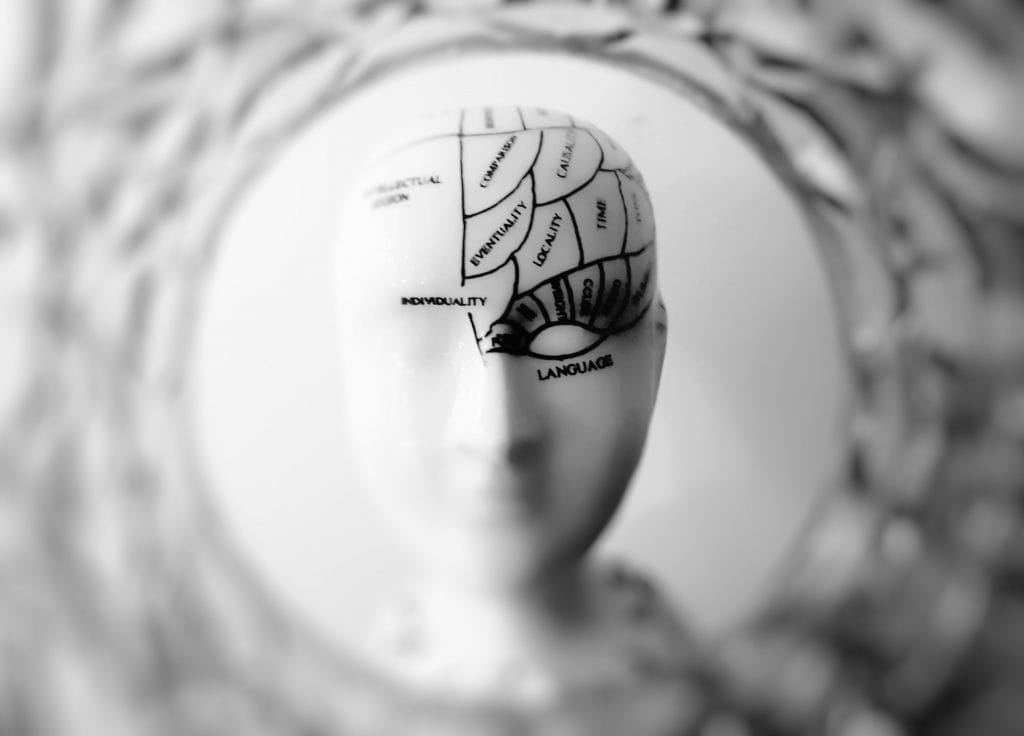
What we did is we looked at literally thousands, now millions of minutes of EEG during meditation. We have an algorithm that knows focused attention versus mind wander and what we’re training you to do is to be aware of your own mental state. We’re training you to come back to that state of focused attention, which is a large component of alpha, but that’s not the only part of it. And then to be able to identify when your brain has moved off of that, builds your metacognition and then return yourself back to that state.
Did you practice or use yourself as a guinea pig as you were honing in on this? Or did you use focus groups? Who was the biggest guinea pig in this fine-tuning process?
I would have been a terrible guinea pig because I was a terrible meditator. In a lot of senses, I was patient number one, the person who sucked at meditating because my brain bounced all over the place, and I need to learn how to meditate. Creating Muse was part of the process of doing that well finally.
For experts, we used real 50,000 hours plus meditators. We would literally sit on top of a mountain as an expert meditator would jump from dhyāna-to-dhyāna, state-to-state, categorizing those states via EEG. Once we had a library of expert meditators, we then went on to categorize a library of novice meditators. You can’t just say this is what an expert’s brain looks like and as a novice turns to meditate, while they should just be like an expert. When you give them feedbacks and experts, that’ll do it. It doesn’t. There’s such a big divide.
We then understood what a novice’s brain looks like through this process, and then iteratively over literally 10 years, started the process of building this tool. We’ve been working on Muse as a meditation tool since 2011. It’s been eight years of building Muse as a meditation tool, 15 years of working with the technology in general.
Do you still suck at meditating?
No. I’m glad to say I’m no longer suck at meditating. There’s this magic moment that came a few months after using the Muse feedback. As we’re building it where I was like, “Oh, this is what it’s supposed to be like. This is the state that people talk about.” I describe it when I was 15, I would hear love songs on the radio all the time and it’d be like, “Why do people sing about love all the time? What’s the big deal?” And then I was in love, and I heard a love song, I was like, “Oh, that’s why they sing about love. Wow. This stuff is really good.” When I finally got it, it was like, “Oh. Okay, now that 2000 years of wisdom that I’ve been reading about finally makes sense.”
Is that a permanent shift? Like once you’ve learned how to ride a bike, you never forget? Or is it where you have to stay on the wagon, you could fall off the wagon. It’s easy to fall off, but it’s easy to fall back on or get back on the wagon. What’s that process like? I haven’t gotten there yet.
I got to an awakening experience, which is different. That was when I went to India on a Tony Robbins’ Platinum Partner trip and one of the Oneness monks touched me on the head and zapped me with energy. It’s called Diksha. It’s a Oneness Plus thing. There was one in particular, really high energy, very powerful monk touched me on the forehead and I had this experience. It’s bizarre, amazing, beautiful, incredible, life-changing. I’m curious if you had any kind of experience like that when you had that special experience where you suddenly got it.
I’ve had quite a number of experiences like that and many more experiences, I’m sure still ahead of me. In the scheme of meditators, I’m still a novice even though I feel like I’ve got a fair understanding under my belt, but as I continue to practice and learn the methodologies and push myself in different directions, I continue to open up. There are lots of moments where I’m sitting there with myself where you have insight, where you can see yourself in new ways, where you can see the connection between things. But it also comes from doing lots of practice.
On the being zapped, meeting the Dalai Lama, I’ve met him a few times. And when I met him most recently, I reached out and he touched me on the arm and I have never felt such a jolt of electricity through my body barring the one time I accidentally electrocuted myself on a telephone when I was a kid. The Dalai Lama touched my arm and literally, I had been electrocuted. My arm was buzzing, my body was buzzing, I was alive. It was insane. No sense of awakeness came from it, just the unbelievable recognition of the physical energetic power of this human being.
That’s amazing.
Yeah. I identified with you in that energetic moment.
I’m curious, did you ever get hugged by Amma, the hugging saint?
Not yet. No, but I imagine that would be beautiful when it happens.
Yeah. She’s hugged millions of people. I’ve gotten several hugs from her, and my wife had a really profound experience getting hugged by her. It’s amazing and wonderful. I haven’t had any zapping experience out of getting a hug from her, but it’s pretty awesome. Definitely worth waiting in line for six or eight hours.
For the novice meditator, is there any kind of hurdle that they should be aware of? For me, I’m a novice meditator. I’m not really into it. My form of meditating in the morning is doing the Ana BeKoach prayer, which is a Kabbalistic prayer; it’s from Kabbalah. That helps ground me, connect me to the creator, to the fabric of creation as well.
It only takes me a couple of minutes, but I’m just scanning the Hebrew letters, I’m contemplating each line. Each line of the seven line prayer has an area of focus like on perseverance, on seeing the bigger picture, and connecting to the tree of life instead of the tree knowledge, all that sort of stuff.
That helps me, but it’s not anything like quieting your mind and just stopping the chatter which is incessant for me. My mind is always busy. I’m prolific with ideas and I know it would be good for me to become an expert meditator.
But then, I get this performance anxiety especially when I put on the headgear. I’m wanting to have it be quieter than it is and that the weather, the feedback is making it worse, so I’m like, “I don’t want that. I want it the other way. I want it quieter.” I get this performance anxiety. Is that normal?
One of the most important lessons that meditation teaches us is non-judgment. You can experience everything that's happening in your body and mind and fully accept them for what they are. Share on XIt’s totally normal for human beings. One of the most important lessons that meditation teaches us is non-judgment. You can experience the things happening in your body and mind without judging them because what we resist, persists—one of my favorite quotes from Jung.
As we build a tense relationship with the things we don’t want, we’re spending more and more time looking at it. It’s like, “Ugh, my mind is so noisy. This is so frustrating. Ugh, I’m so terrible at this.” We only build more and more dialogue that scaffolds on each other as we build more emotion around it, which sends fuels, more energy, paying attention to the things we don’t want. What you have to train yourself to do in meditation is to let go of the thoughts and to do it without judgment.
We all have a million thoughts that go through our mind as we meditate. That’s super normal. We are just human beings. Thank God we have active brains. What you want to learn to do is to make the choice not to follow them. You sit there, you focus your attention on your breath, a thought comes in, you see that it’s a thought, at which point, you have a choice to follow that thought or to just let it go and let it pass and return it back to your breath. The more you just let go of the thought, let go of any tension, let go of any expectation, let go of any judgment, the more you’re able to sit with the stillness of your breath and find quiet there. That is how the mind quiets. It is not through fight, it is through acceptance and letting go.
That’s interesting that you say judgment because that word specifically is tied to what Kabbalah’s referred to as Tikkun, which is your soul correction. What you’re here on earth to do to elevate your consciousness and your soul. I am an expert at judging. Something I work on and I’ve gotten better at the non-judgment, just accepting not just others, but myself, too. It’s a journey.
There’s a place for judgment. Judgment and discernment have tremendous value in our lives. But like anything, you want to be able to turn it off. As we go through life judging ourselves often very harshly, we create a lot more difficult for ourselves than we need to. We create a lot of disturbance within the self through this active judgment that just wastes space and wastes emotional energy which doesn’t need to be wasted.
As you let go of the judgment, you let go of the resistance. You can just exist in what is, you can exist in the flow, you can exist in abundance, you can exist in just the possibility of being. And you recognize all the judgment you thought you needed to have, those were all just stories. Once you start letting go of those stories, that actually becomes very easy.
Frankly, in a lot of ways, life is really easy. It is in our thinking, our judgment, our frustration, and our layering of emotions with thoughts with more emotions that create the complexities and dramas and traumas in our life, that once we drop them, we actually realize everything actually is fine. I am safe, I am in a good place, I can make money, I can have a family. As you create dramas and traumas, you create the kinds of things that push away from, which is naturally is.
What are some examples of how we create dramas and traumas? I think a lot of us feel like life is just sometimes conspiring against us. I believe, from having that spiritual awakening in India, that life happens for us not to us and that we live in a friendly universe. I was skeptical before that. I was an agnostic, questioning, doubting kind of person.
For the scientist, empirical, evidence kind of person who’s listening to this, what do you tell them about this idea, that we’re creating or choosing the traumas that have happened in our lives, even if it happened in our childhood when we were very young and we had no agency? What would you tell somebody from a metaphysical spiritual perspective on this topic?
First, that’s a fascinating question that I’ve never been asked and it’s awesome. Just to lay the groundwork for this, I’m Jewish of background, I’m actually atheistic, I don’t believe in a god, I don’t believe that the world is predetermined in any way, I don’t believe that things unfold the way they should. I just believe that we exist and we can make choices within our life about how to experience the world that we’re in.
If you take the most simple example of having a fight with your spouse that morning, you can continue to ruminate or brew on the fight that you have throughout the rest of the day. You can think about how they were wrong and bad. You can think about all of these ways that this would drive the two of you apart and how this is not the partner for you and not the life that you want. Or you could choose to say this is another human being, I accept their perspective, I accept the difficult things sometimes happen, I accept that I’m here to work through with this person because of the choice that I’ve made.
Any time a difficult emotion arises, you can experience it, send your own emotional sense love, fulfill yourself with that love and fulfill the other person with that love and come out of it very quickly and very beautifully. You’re constantly making choices about the world that we live in and how we experience it.
To look at it from a different angle, I realized a few years ago that lying in my incredibly safe home in downtown Toronto, which is a very safe city, living with the locked doors of my very safe neighborhood, I always felt in the back of my head that somebody was going to come in and strangle me. It was just the subtlest, tiniest little thought that I had.
It always left me feeling a little bit unsafe even when I was in complete and total safety, as safe as with my big, strong husband next to me, and there’s nothing happening. I realized that I had watched a movie on an airplane when I was about 10 years old, with a scene where a man in black comes in at night into a woman’s bedroom and strangles her. That little bit had been carried inside me this entire time and was constantly telling me that I was unsafe.
As a result, as I went through the world, I constantly went through the world with this heightened level of anxiety. It was very subtle, with a small feeling of unsafety, and as a woman, you’re constantly told you’re unsafe. As I recognized that and chose to purge myself of that experience, I chose to say, “Okay, now I see what it is. I see this was not relevant to my current situation. This was a story. I had to clearly overblown it.”
It took a lot of work to really heal myself from what was minor trauma, that wasn’t something that happened to me. I even had other actual traumas in my childhood that I recognize, that I carried.
As I chose to go back through in psychotherapy and work, heal those traumas, you recognize that you don’t need to replay old stories, that you are a capable, functional human being who can feel whole, who can feel fully safe, who can feel fully loved. These stories that you carry around through your life that build up the scar tissue, can actually be pulled away and the layers can be pulled back.
In reality, the world that we live in is fundamentally a good place. The people that we are, we are fundamentally good people, we are all fundamentally loved. It’s so easy to forget that and feel this underlying sense of lack of worth, or lack of fulfillment, or lack of safety. That’s due to layers of conditioning. Those layers of conditioning, you can choose to peel back, you can choose to heal, to look fully, completely comfortable in your current life.
Sometimes all that requires getting some help. Like a hypnotherapist to help you or somebody like that. Did you utilize hypnotherapy or any other modalities to purge that false belief and that traumatic memory from 9–10 years old?

Totally. I was actually a practicing psychotherapist for a decade. As a practicing therapist, we also do a lot of therapies. I’ve done hypnotherapy, I was trained in NLP. NLP is a great methodology. I used Kushal to all sorts of different forms of psychotherapy. Really, where I got to in going through when purging the traumas was the ability to watch my mind and watch my body and watch when it was diving into a story that was not true and not useful.
One of the most useful therapies that I have done is behavioral therapy where you intentionally go towards things that you are afraid of. You recognize that fear is this thing that just fires when it thinks it needs to, but most of the time it does not. We go through our lives with subtle fears that come up when really, we’re actually fine.
All of these relatively inconsequential things that it thinks is really meaningful, and it continues to fire anytime it thinks anything kills anything, like those situations when you’re lying in bed and you’re safe. Safe bed and you’re remembering a story from when you were 10 and all of a sudden, your amygdala starts firing because a pattern matched at the time when a pattern shouldn’t have been matched. It looked or smelled the same, but was not the same.
As you start to go into your fear, you recognize that fear doesn’t need to rule you. Most of the time, what you’re avoiding in your life is the sensation of fear. We navigate through so much of our lives just trying to avoid feeling things because we think that feeling hit will be bad. We don’t volunteer to get up and give a speech that would honor somebody or honor ourselves, because we’re like, “Oh, that would be scary. I don’t want to be looked up.”
There are all of these things that we don’t do because we don’t want the feeling of fear that’s associated with it, so we just shy back. We don’t go up and network in the way that we want to because we’re afraid of talking to that person, so we shy back. When you lean into your fear and you feel it, you feel it fully, you’re doing the thing and feeling the fear, you recognize that fear is not something to be afraid of. Fear is just a bunch of sensations riding through your body. You can ride that, big deal. From that moment forward, fear no longer has power over you.
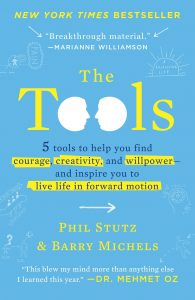
That is profound and I should learn these five years reading the book, The Tools: 5 Tools to Help You Find Courage, Creativity, and Willpower. That’s a book written by two psychotherapists and these were the most practical, immediately useful tools that they had developed during their many years of practice.
The first tool is running towards fear. The way that they defined it or illustrate it was to imagine this dark cloud and that dark cloud is your fear. Instead of just facing it, what if you ran towards it and then through it? And on the other side is your idyllic life or whatever goal you’re after.
The way that they discovered this tool, one of the co-authors, he asked a childhood friend, a high school friend while they were both in high school what his secret to success was. He was a football player and he was all-state, he was just phenomenally good. He wasn’t the fastest, he wasn’t the strongest. He just had this mindset about him. The friend, the psychotherapist wanted to know what was behind that.
The guy said, “The first thing I do on the field is I run straight towards getting tackled by the biggest, strongest, most intimidating football player on the opposing team. Once I’ve done that, I’m invincible the rest of the game.” He actually ran towards the fear. That was the metaphor that this psychotherapist used to help his people that come into his office. Then he wrote a book about it and that tool was profound.
The second tool, which I think you’re going to love as well, is how to fill up somebody you’re in conflict with love. Imagine that person is in front of you and you fill them up with love from you and then instead of you being depleted, you’ve then afterward filled yourself up with love from the universe. While you’re filling them up with love, you actually visualize this love transferring energetically into the person in front of you. You just imagine what that’s like for them to feel that, experience that, and the sensations of it.
I did this with my aunt, who I was not close to, I hadn’t spoken to for several decades. I lived with her for a couple of years when I was a child. They were not so great experiences. I didn’t forgive her for decades and didn’t have any contact with her, and then I did this whole exercise and I visualized her and then I decided to give her a call and reconnect with her with a wonderful conversation. She’d changed a lot, and she ended up coming to visit a couple of months later, she got to meet my kids for the first time, and they were already teenagers. The unforgiveness is really… what’s that quote about taking the poison, hoping to hurt the other person? Whatever that quote is.
You’re constantly drinking the poison, hoping to poison the other person, but you only poison yourself.
Yeah. I just got to release that. She’s part of my life again and my kid’s lives. I should have done that a long time ago, but that book really helped me. I don’t know if you’re familiar with The Tools.
I’m not familiar with the specific tools but definitely love in an extraordinarily powerful thing. As a scientist and somebody who’s very prominent in the biohacker community, I used to tend to shy away from talking about love and like, “Oh, people are just going to think I’m flaky or too feminine,” but love is an extraordinary tool.
I recently came to the understanding that I was unconditionally loved and that has solved so many things inside my life. I came from a background where my mother was super loving. I always knew that I was loved by her, but it felt like it was a bucket that needed to be filled.
When I actually got a grocked, that I was truly unconditionally loved at all times, that was the gift that I was given and that’s what I have, then so many other anxieties just dissolved away. The need for approval, the need to care about what my husband thought about me. All of those needs that keep you in tense relationship with yourself or the world, so many of them just became meaningless as I had this internal sense of actually being loved. I didn’t need that external validation.
It is not through fight; it is through acceptance and letting go. That is how the mind quiets. Share on XI’ve always deeply believed that if we knew that we are fully loved, fully worthy, and fully safe, all three things, we would just be glorious. Most of the mental dysfunction we had would fall away. All the weird ways that we interact with one another to get things surreptitiously or to try to get better than somebody else, or the anger that we have towards ourselves, they just dissolve as you’re fully worthy, fully safe, and fully loved.
The truth of the matter is, most of us are, but we just cannot understand that, we just cannot feel that, we just have the stories in the back of our heads of like the movie we once saw that made us feel unsafe for the rest of our life. When you come into contact with being fully safe, fully worthy, and fully loved, everything starts to change.
As a therapist, I would have people come into my office and I would do an exercise that said, “You are worthy.” And then they’re like, “I don’t know that I’m worthy.” I’m like, “Okay. Let me ask you, are babies worthy?” “Of course, babies are worthy.” “Were you worthy as a baby?” “Maybe.” It’s like, “Hold on, we just said that all babies are worthy. That was an easy thing for you to say. What made you different as a baby?” Nothing except the perception that we’re not supposed to think of ourselves as fully worthy.
I do exercises for self-love. People would have no difficulty shining love toward somebody else, but so much difficulty shining love towards themselves for no actual practical reason. We are all fully worthy of self-love, but we have these beliefs that for some reason we’re not allowed to have it or we’re not good enough.
I can tell you, every single person that listens to the podcast, unless you’ve gone and killed somebody or done an egregious harm on another person which should’ve landed you in jail, you’re all fully lovable and fully worthy. You just have to allow yourself to know that and to experience that until the dysfunction that comes from misperception about the way that you exist in the world, dissolve.
So true. This reminds me of an exercise that I did at a Tony Robbins event. It’s where you identify what your primary question is. It’s part of Date with Destiny. Have you ever been to Date with Destiny?
I’ve not.
Okay. It’s this amazing event. I met my wife there.
That was a date with destiny.
It was. On so many levels, yes. Now, the primary question exercise is where you are trying to figure out what is the question that runs your life, that runs in the background, that you’re barely even able to perceive? Probably not even able to perceive. It’s too much at an unconscious level. For example, I’m not safe. How do I stay safe? The statement “I’m not safe” is not the thing that’s so insidious. It’s the primary question that we have that’s related to that which is, how do I stay safe? If that’s the first question that comes into your mind when you are entering a room, when you are arriving at a party, when you are heading towards your car to drive home. Those questions can just destroy any sense of happiness or fulfillment because you’re constantly waiting for the other shoe to drop.
This primary question exercise allowed me to see that I was looking for the other shoe to drop in a different way than safety, but then you have to rewire that with a better question that better serves you and makes you happier. That was a really profound part of the Date with Destiny event. I’m curious if you’ve heard of that exercise?

I haven’t heard of that exercise specifically, but that’s very telling. We definitely go throughout the world with that framing. One of the things that meditation helps you do is to finally see your framing, finally listen to your dialogue, finally hear the question that you’re asking yourself over and over and over again, and just saying, “Nope, I don’t need to go there anymore.” Meditation is like going to the gym for your brain where you train yourself out of those old patterns because you can see them and because you can now make a different choice, which is not to follow those thoughts, to just come back to your breath, to come back to a completely neutral center.
Right, and that actually can be not just therapy but your medicine. A lot of people will get prescribed medications from a psychiatrist and yet, they could solve it through other means. I went to Dr. Daniel Amen to Amen Clinics, had him on the show.
You have done it all. That’s awesome. You must have so much fun with all these.
I love biohacking and I do have the means to try a lot of different things. It’s pretty awesome. My wife is big into this, too. We both met at a Tony Robbins event that we had signed up for and it was birds of a feather situation where we’re both into self-development and everything. I also believe that she’s my soul mate, the Creator brought us together and lots of spiritual metaphysical beliefs about it, too. But this shared journey that we’re on, where we’re constantly improving and iterating ourselves, exchanging versions as Donny Epstein likes to say, is pretty awesome.
I did the SPECT scan and all that sort of stuff as part of Amen Clinics. One thing that they explained to me is that I tend to ruminate. Also, Dr. Andrew Hill explained this to me, too, when he looked at my EEG from doing Peak Brain Institute, is that I get caught in these loops. Dr. Amon calls it is a diamond pattern. There are certain areas of the brain that are more active and forms a diamond when you look at it on a three-dimensional map of your brain. So then you get stuck in this loop and you ruminate, ruminate back and forth. You could take medication for this. It could be prescription drugs or could be just something like Gabacom, an herbal supplement that doesn’t require prescription to quiet the brain, or you could just meditate, right?
There are some cases in which prescription drugs are really helpful and to get combination therapy is always useful, but for most of us with average rumination, meditation really is the thing that helps you understand and get yourself out of rumination. When you’re ruminating, you have a hyperactive default mode network.
Part of your brain, your posterior cingulate cortex, and your prefrontal cortex speak to one another in this loop that’s called the default mode. When you put somebody in a brain scanner and tell them to just be yourself, no particular instructions, just rest. You see activation in this default mode network.
In ruminators, you see hyperactivation on this default mode network. When you put somebody who’s meditated for a long time in a scanner, what you see is a decrease in activation of the default mode network. Meditation is actually working on the part of your brain responsible for rumination and decreasing its activity.
When you lean into your fear and feel it fully, you'll recognize that fear is not something to be afraid of. Share on XIn spiritual talk, we talk about the monkey mind. It turns out that this monkey mind actually has a neural correlate. As you meditate, you quiet that monkey mind, you quiet the tatter inside your head or quiet the rumination, and you quiet the habit of rumination. Rumination’s a habit. You learn a different activity that breaks that habit cycle.
It just occurred to me, Oneness is what I went and did in India and had that spiritual awakening. The monks explained that the divine is an experience, not a belief. That was really profound idea, a concept for me that I wouldn’t have been that receptive to prior to having the experience of the divine. But it was just amazing. They call it Oneness Meditation. It is a form of meditating. You might think, “TM isn’t for me or mindfulness meditation isn’t for me, I have tried that a few times and it’s boring or I just can’t really do it. I’m just not any good at it or whatever,” but there are many forms of meditation that you could apply and quiet that monkey mind, connect to a higher power, to the fabric of creation, or to a higher purpose, or to just the Oneness, right?
There are so many forms of meditation. They can be taken at various different levels. The focused attention practice that I described, on the one hand, is an incredible secular practice that is training your brain to increase your focused attention, which takes you out of your ruminating mind, which lets you quiet your negative and frustrating thoughts, which lets you decrease your stress and improve your physiology. For some people that is just a secular practice and what has incredible secular benefits. For other people, when you quiet that mind, it then allows you to access higher states and come into contact with an experience of oneness and with the understanding that we are all connected. Meditation is an extraordinary tool that can take you in so many different directions depending on what you need at that moment in your life or what you’re searching for.
Right. You just have to choose it. That’s the thing. You can know about it and you can say, “Wow, this was a really interesting episode. I got some good knowledge or ideas out of that,” but you don’t apply it, you don’t actually practice the practice and nothing really changes.
It’s literally why we made Muse. As a therapist, I would always tell my patients to meditate. I sucked at meditation, so I teach them to meditate, but I really couldn’t really expect them to go do it successfully, because I was having difficulty doing it. As we made Muse, the idea is to make a tool that you could just hand to somebody and say, “Here, go meditate. Use this thing, and it would teach you.” Muse guides you, it shows you what to do, it shows you when that state of focused attention, it gives you data, it lets you see your progress, and it tells you that you’re doing it right.
Now there are literally thousands of doctors, psychotherapists, life coaches, where instead of telling their patients to go meditate just hand them a Muse. There are hundreds of thousands of people all around the world that have either started their practice from nothing with Muse and they’re finally like, “Oh wow, now I can meditate.” Or are intermediate or expert meditators who’ve been able to build a deeper and better practice using the tool.
We deeply believe that if more people meditated, people’s individual lives would be better and ultimately the world would be a better place. We’re like, “How can we best impact the world?” It was to making a tool that would finally make meditation easy, actionable, science- and technology-oriented, and give you real data, so you could start and enhance your practice.
And most importantly, to create a habit that sticks. I recently interviewed BJ Fogg who’s one of the top experts in the world on habit formation. It turns out there is an emotion, a feeling that was previously unnamed until BJ named it and that’s called Shine. The set feeling of success. If you inadvertently build into an app or a tool or resource, the lack of Shine or the opposite of Shine.
The Way of Life app, I used to be just a big proponent of I loved it, allowed you to create these long, green chains of your new habit. But then you’d missed a day, and then you put an X in the box for that day, and the Shine’s gone. I would feel bad about the next day missing it, now I have another red box and I would stop using the app.
It wasn’t until I understood what Shine was that I’m like, “That’s why I don’t use that app.” I was not enjoying the feeling of putting a red box in there and what Muse does, is it enhances and focuses on the Shine without the negative side effect of giving you no Shine when you mess up. You’re actually getting rewarded with recoveries for coming back to a quiet mind, you’re getting these little birds when you stay in a quiet mind for a period of time, and you get points for just doing the practice at all. It just feels like Shine is all over the place in the app and in the device.
I don’t know if you recognize that when you were building the tool, the interface and everything, but you did a fantastic job at that.
Thank you so much. That’s my amazing product team lead by Alec. I don’t know if we were consciously thinking of Shine but definitely understand the need to reinforce people that is supposed to feel good because so often meditation feels bad. You sit down, you’re like, “I suck at this,” then you think you suck and then meditation is terrible. Once you change the lens and you change the wording to a place where you come where you are supported, where you want to come back every day, and you want to continue to see your success, it really changes it.
We have a community now called the Muse Community, where we have 9000 people who support each other. They share their stats, they share their improvements and you get the community going “Rah you, that rocks!” We have individualized coaching. If you don’t want to do it in a community setting, there’s a person that you can speak to every week, who will encourage you along your journey with Muse and meditation.
There are so many ways. We have monthly challenges that you sign-up to so that you stay on track and you stay motivated with the power of social dynamics. There are so many ways. We’ve built scaffolding to help you start and establish your practice. Meditation is amazing, but only if you do it regularly.
That’s why it’s called a practice.
It occurs to me that it’s almost like you’re building up the mental muscle that you can then use to have a breakthrough. For example, when you had that breakthrough looking back and recognizing that movie was the source of a lot of your internal strife, turmoil that was created by this false belief.
That also, by the way, reminds me of a recent interview I did of Elliot Roe who’s a mindset expert, works with high stakes poker players, professional athletes and so forth. What he told was through hypnotherapy, he discovered that at three years old, he saw a photo of an airplane on the mantle. And he asked his dad about it. His dad explained, “That plane doesn’t exist anymore. It crashed. My business partners died in that crash.”
At an impressionable three years old, he took that on and he ended up developing a fear of flying, which was preventing him from living his dream. It was really limiting him. That fear of flying was severe and he had no idea why he had it until a hypnotherapy session unlocked this memory of a three-year-old Elliot seeing that photo and having that explained to him that the plane is gone and two people that were close friends and business partners of his dad were gone too.
Amazing, right? That this is just sitting in our subconscious, driving our lives. In the driver’s seat and we don’t even realize it.
One of the things that we always talk about in meditation is how it takes you off autopilot. We all just assume or supposed to be subject to the stuff that’s in our minds. Our mind’s thinking that creates us and that’s the experience we have. What meditation is extraordinary at doing is taking you off of autopilot, so that you’re no longer subject to the unconscious drives and thoughts that drive your life daily. You can now put yourself in the driver’s seat. You can make choices, you can identify the things that are driving you and you can say, “Nope, don’t want that yet. Yeah, do want this.” That leads to incredible focus, incredible ability to achieve what you want when you are the one driving it.
I've always deeply believed that if we knew that we are fully loved, worthy, and safe, we would all flourish in life. Share on XSo true. If there is something that I should have asked you but didn’t, what would that be?
There are so many fun things. I love talking about the neuroscience of mindfulness. Do you want to dive in for another minute?
Let’s do it.
It’s easy to think about meditation as a spiritual thing or as a woo-woo thing, but actually meditation is something that has an extraordinary impact on your brain. When we look at studies of an expert meditator, what we see is an increase in thickness in the prefrontal cortex. From the lab of Dr. Sara Lazar, she took expert meditators and put them in a scanner, and she saw that they had an increase in their prefrontal cortex thickness even as they aged to the point where 150 years old had a prefrontal cortex thickness of about a 25 years.
As we know, our prefrontal cortex is the part of our brain responsible for planning, organization, and higher-order processing. We also see in the brains of meditators a decrease in the amygdala, that’s the area of our brain that creates the fight or flight response. As you meditate, you’re able to down-regulate all of those fears and anxieties that you have and it actually can lead to a physical change in the structure of your brain.
In novice meditators, you can see a decrease in the activity and then expert long term meditator, you can even potentially see a change in the size of the amygdala. Meditation can increase our corpus callosum, our connection between the left and the right hemisphere. We can see an increase in the temporal-parietal junction, which is the part of your brain responsible for empathy and perspective-taking.
Possibly the most amazing study of the brain in meditation, Dr. Sara Lazar was able to show that just eight weeks of meditation could increase the gray matter of an individual. The gray matter is the number of connections inside your brain. Einstein had more gray matter than the average individual. Meditation is really unbelievably impactful.
The study by Dr. Lazar, she showed that a long term meditator had a brain that looked 7.5 years younger than a non-meditator. She defined those long-term meditators as somebody who’d only meditated for five years. If you think you don’t have time to meditate, think about the extraordinary investment that is. Five years can get you 7.5 years off your life. If you’re anything like the people in her study.
That’s awesome. It reminds me of this concept that there’s this longevity escape velocity. If you just live long enough, you’ll get each year that you live back in an extended lifespan because of the enhancements and advances in technology relating to health and longevity. That concept comes from Peter Diamandis. It’s almost like you’re getting that, but with the youthfulness of your brain. By just spending that time meditating, you get years back of a young, youthful and powerful brain.
Potentially. It can’t solve everything in your life, but it can make a whole lot of things a little bit better and really impactful lives.
Very cool. We’re out of time, but if our listener wanted to take the first step in this process, probably to go buy a Muse headband, where should they go? What sort of websites and resources? I’m guessing choosemuse.com is where you would send them, but you tell me.
Yes. You can go to choosemuse.com and you can find Muse there. As we’ve talked about, Muse is a tool that can build, help you start meditating, and give you real-time feedback on your heart, your breathing, your body, and your brain during meditation. You’re getting real data on all of the systems, you understand how they shift and change, you’re able to hack them, and you’re able to see their improvement every single day as you meditate.
I also have a podcast Untangle, where we interview meditators and neuroscientists to understand more of the brain and how it creates the experience of your life.
Very cool. Thank you, Ariel, for sharing your journey, and your wisdom, and being so open and vulnerable with what you’ve gone through and your whole evolution as a human and as a soul on this earth. Thank you so much.
Thank you. It was my joy and pleasure, and I hope to inspire others to recognize the safety, the love, the certainty that is here and now, and how we can get out of our own ways to just come and contact with it and be.
Beautifully said. Thank you, Ariel.

